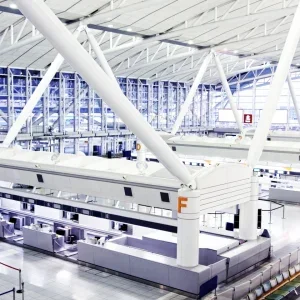The International Air Transport Association (IATA) called for action to improve air traffic management (ATM) efficiency and costs, put forward key objectives for a better-performing global ATM system, and set out a vision for achieving the goals of the long-delayed Single European Sky (SES).
"It is time for action on air traffic management performance," said Tony Tyler, IATA’s general director and CEO, speaking at the World ATM Congress in Madrid. "Globally, aviation generates $2.2trn in economic activity and supports 57 million jobs. Making airspace more efficient and cutting costs will provide a big boost to the ability of airlines to connect more markets. So we need to roll up our sleeves, work together as partners and build a stronger ATM system."
Tyler noted that, collectively, the aviation industry has made tremendous progress on safety through a focus on global standards, industry-government cooperation and a clear vision. He argued that applying a similar approach to ATM would enable progress on efficiency, and proposed an agenda of cooperation focused on four shared aims:
- Prioritising safety, efficiency and environmental benefits: the International Civil Aviation Organization (ICAO) Aviation System Block Upgrades programme must succeed. Air navigation service providers (ANSP) should put a short-term focus on performance-based navigation implementation.
- Global harmonisation and interoperability: ATM fragmentation across a range of technological and operational issues must be reduced. A first step would be to agree common implementation standards for automatic dependent surveillance broadcast (ADS-B) across the world. At present, Europe, the US, Canada and Australia all have different ADS-B standard requirements.
- Proper utilisation of airline avionics investment: a joint paper on the principle of ‘most capable, best served’ should be put forward to the ICAO assembly by IATA and the Civil Air Navigation Services Organization.
- Cost-effectiveness: Tyler had strong words for European states and ANSPs over their failure to make progress on SES, and particularly their targets for cost reductions.
"The SES goal of a 50% cut in charges remains as elusive as ever. Notoriously, Europe’s ANSPs fought to water down already weak cost-efficiency targets, and then failed to reach even these modest goals. More recently, we have seen the resistance to a stronger performance scheme and more ambitious improvement targets for the period 2015-19.
"European aviation is in crisis: over the past year we have said goodbye to names like Malev and Spanair, and we are looking at 2013 being a second year of European aviation only breaking even. Airlines need to reduce costs wherever possible, and European ATM is costing €5bn extra a year in inefficiency. That is not sustainable and something needs to be done about it," said Tyler.
In response to the lack of progress, IATA, along with the Association of European Airlines and the European Regions Airline Association, published a report, ‘A Blueprint for the Single European Sky’, outlining a clear roadmap for achieving the SES goals. Among the report’s recommendations was to reduce the number of air traffic control centres to not more than 40 from the present 63, and to reduce the ratio of back-office staff to controllers from 2.4 to 1.6.
"Some tough choices need to be made," said Tyler. "Our report may not be the only way forward, but whatever is agreed, we need an overall plan to realise the SES. And we urgently need to make progress by agreeing to the essential reforms and getting on with delivering them."




